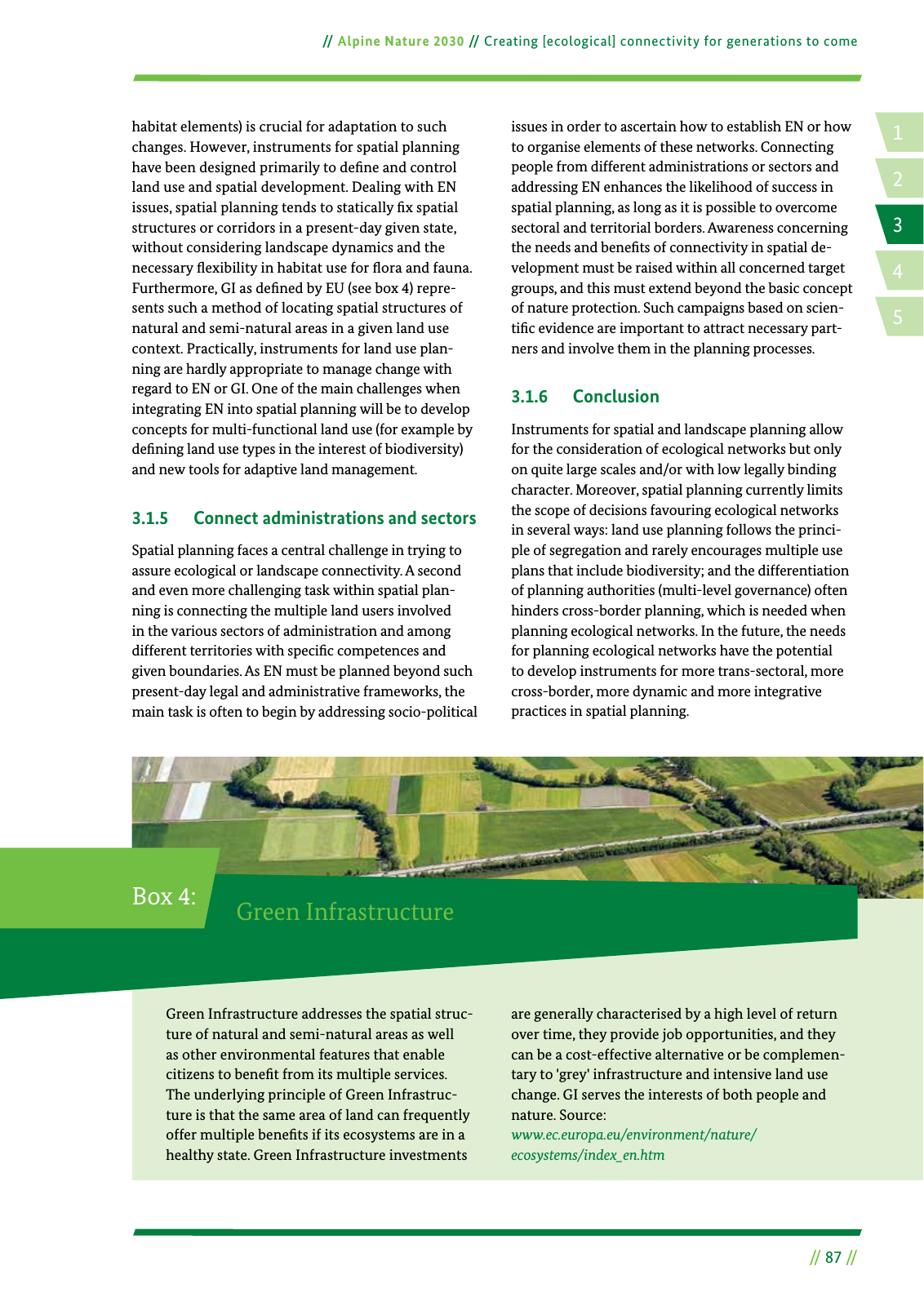14 2 5 3 Alpine Nature 2030 Creating ecological connectivity for generations to come 87 habitat elements is crucial for adaptation to such changes However instruments for spatial planning have been designed primarily to de ne and control land use and spatial development Dealing with EN issues spatial planning tends to statically x spatial structures or corridors in a present day given state without considering landscape dynamics and the necessary exibility in habitat use for ora and fauna Furthermore GI as de ned by EU see box 4 repre sents such a method of locating spatial structures of natural and semi natural areas in a given land use context Practically instruments for land use plan ning are hardly appropriate to manage change with regard to EN or GI One of the main challenges when integrating EN into spatial planning will be to develop concepts for multi functional land use for example by de ning land use types in the interest of biodiversity and new tools for adaptive land management 3 1 5 Connect administrations and sectors Spatial planning faces a central challenge in trying to assure ecological or landscape connectivity A second and even more challenging task within spatial plan ning is connecting the multiple land users involved in the various sectors of administration and among different territories with speci c competences and given boundaries As EN must be planned beyond such present day legal and administrative frameworks the main task is often to begin by addressing socio political issues in order to ascertain how to establish EN or how to organise elements of these networks Connecting people from different administrations or sectors and addressing EN enhances the likelihood of success in spatial planning as long as it is possible to overcome sectoral and territorial borders Awareness concerning the needs and bene ts of connectivity in spatial de velopment must be raised within all concerned target groups and this must extend beyond the basic concept of nature protection Such campaigns based on scien ti c evidence are important to attract necessary part ners and involve them in the planning processes 3 1 6 Conclusion Instruments for spatial and landscape planning allow for the consideration of ecological networks but only on quite large scales and or with low legally binding character Moreover spatial planning currently limits the scope of decisions favouring ecological networks in several ways land use planning follows the princi ple of segregation and rarely encourages multiple use plans that include biodiversity and the differentiation of planning authorities multi level governance often hinders cross border planning which is needed when planning ecological networks In the future the needs for planning ecological networks have the potential to develop instruments for more trans sectoral more cross border more dynamic and more integrative practices in spatial planning Green Infrastructure addresses the spatial struc ture of natural and semi natural areas as well as other environmental features that enable citizens to bene t from its multiple services The underlying principle of Green Infrastruc ture is that the same area of land can frequently offer multiple bene ts if its ecosystems are in a healthy state Green Infrastructure investments are generally characterised by a high level of return over time they provide job opportunities and they can be a cost effective alternative or be complemen tary to grey infrastructure and intensive land use change GI serves the interests of both people and nature Source www ec europa eu environment nature ecosystems index en htm Box 4 Green Infrastructure

Hinweis: Dies ist eine maschinenlesbare No-Flash Ansicht.
Klicken Sie hier um zur Online-Version zu gelangen.
Klicken Sie hier um zur Online-Version zu gelangen.